Sends a signal to another object or system, often used for asynchronous communication.
Archives: Templates
Templates and model types in the QualiWare platform.
Rule Family
Description of this template will be available soon.
Role Binding
Description of this template will be available soon.
Risk Type
Description of this template will be available soon.
Risk Assessment
Description of this template will be available soon.
Repository View Definition
Description of this template will be available soon.
Repository Folder
Folders offer access to specific groupings of objects, making objects easily accessible to the relevant stakeholders. The template name for folders in QualiWare is “RepositoryFolder”.
RepositoryFolders can be created in QLM and in the Repository Explorer from the web:

On the RepositoryFolder tab you can add a short description and create a hierarchy by including additional repository folder(s) in the folder.
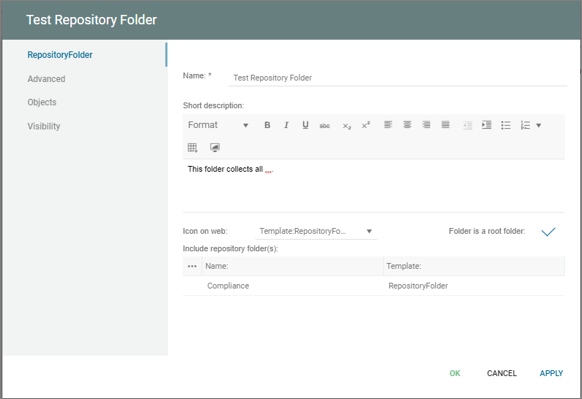
If “Folder is a root folder” is selected the folder becomes available in the folder selection in QLM.

On the Advanced tab you can specify which tag(s) should be included/excluded, and set additional search conditions:
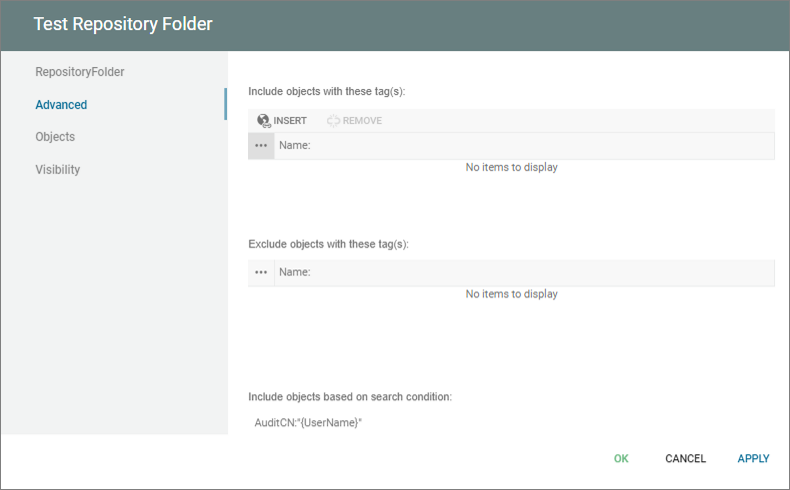
On the Objects tab you can include all objects of one of more template(s) as well as include specific object(s):

On the Visibility tab you can specify who can access the repository folder from the web.
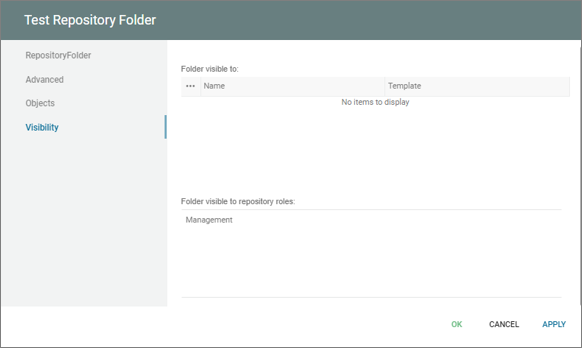
A repository folder can also be available from the web in the repository explorer.

The Repository Explorer is configured in the HTMLPublisher in QLM, where folders can be added:
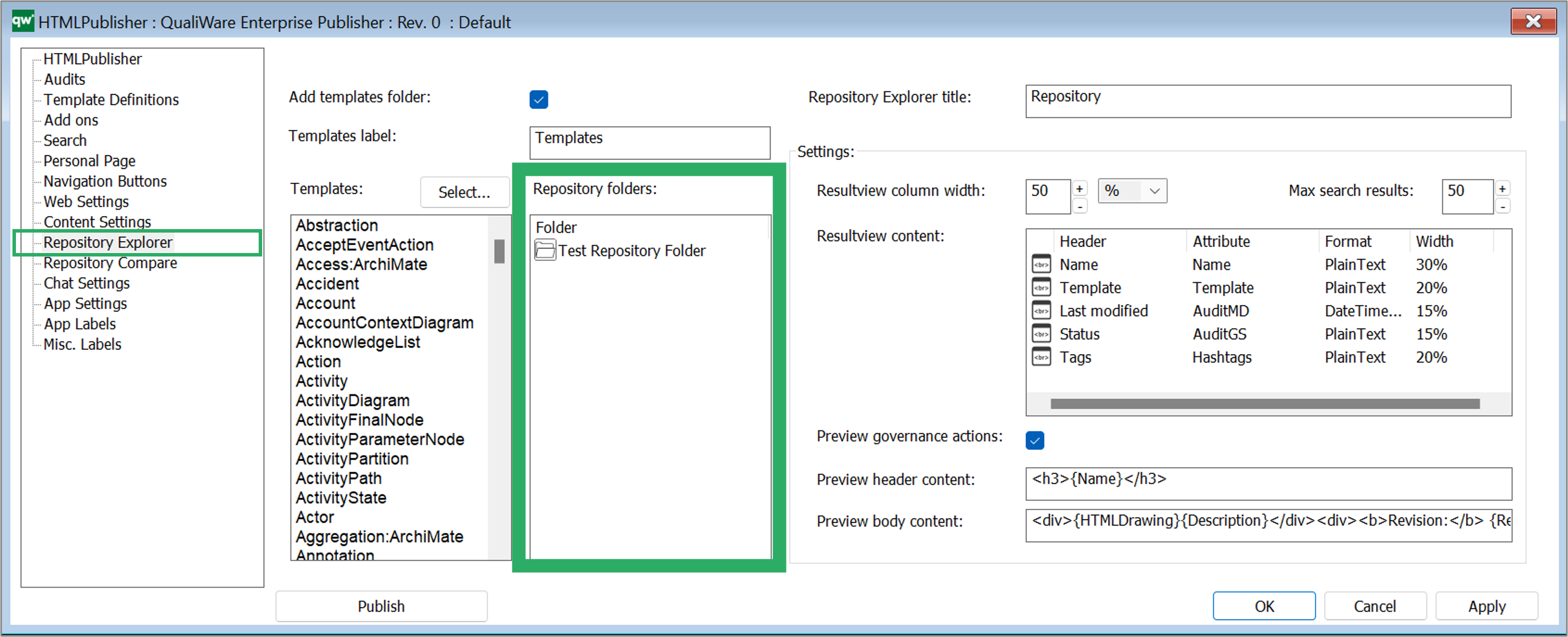
Read more about folders and hashtags here
Report Definition
Report definition is used to generate reports for e.g. a diagram type, and make them available on the web.
There is a set of standard reports included in the standard configuration, click here to see more about the standard reports.
Reports are designed via the template ReportDefinition.
Reports are always generated dynamically based on the content where they are executed. For example, if you click on the report button on a diagram, it will use the objects and their information contained on the diagram. To make this possible it is necessary to define what variables the ReportDefinition should gather and where it should place them in the report.
Designing a report consists of four stages: Designing the queries, arranging the attributes in the main report, designing sub-reports and finally applying advanced formatting.
- In the design phase it is necessary to structure the data for the report. This is done via SQL. To remove the need of learning SQL QualiWare has introduced a Query Designer that helps users build SQL scripts and tables automatically based on a graphical diagram.
- The queries are then used as input for the ReportDefinition where the individual attributes can be re-arranged graphically.
- When designing a Query that needs to read the attributes of objects that are referenced in a multi-link field it is necessary to create sub-queries and sub-reports. Sub-reports gather and organize the attributes for the underlying objects and then are themselves inserted into the main report, just like the other attributes.
- When the data has been defined, organized and arranged in the report it is necessary to apply advanced formatting to the report for aesthetic reasons.
See this detailed guide for more.
Once created the report can be added to the relevant template in the Template Definition, to make them available on the web, via the “Print icon” in the Toolbar.
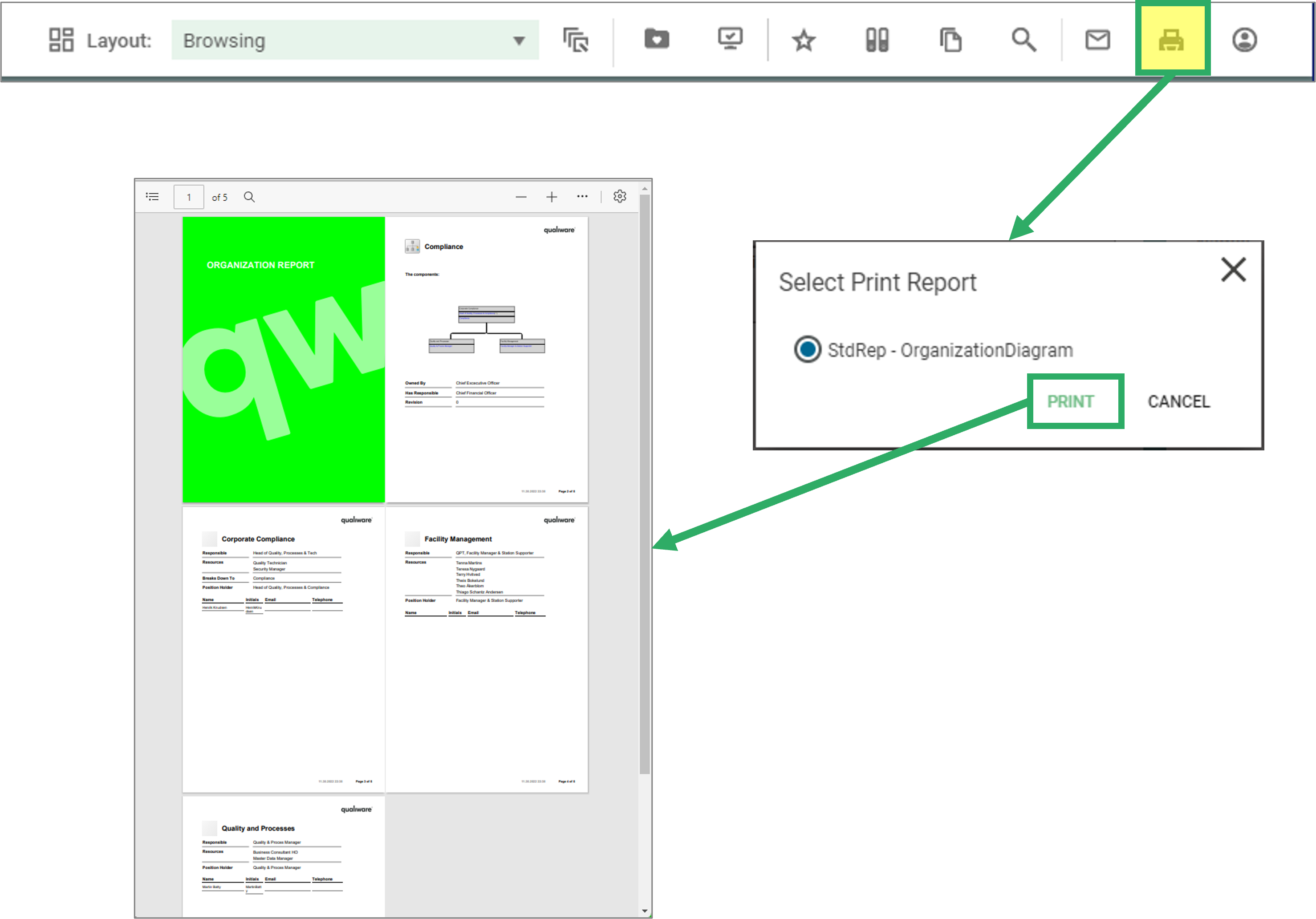
Rel Constraint
RelConstraint, short for Relationship Constraint, is a concept in Class Diagrams that represents constraints or conditions imposed on relationships between elements in the model. These constraints help to define rules or restrictions on how elements can be connected or associated with each other, ensuring the model adheres to the specific domain, context, or business rules.
In a Class Diagram, a RelConstraint can be associated with different types of relationships, such as associations, generalizations, or aggregations.
Example: In a Class Diagram for a university enrollment system, you might have two classes called “Student” and “Course” with an association between them representing the enrollment of a student in a course. You can define a RelConstraint on this association to express that a student can enroll in a maximum of six courses per semester. This constraint ensures that the enrollment process adheres to the university’s rules and policies.
Relation Query
Description of this template will be available soon.